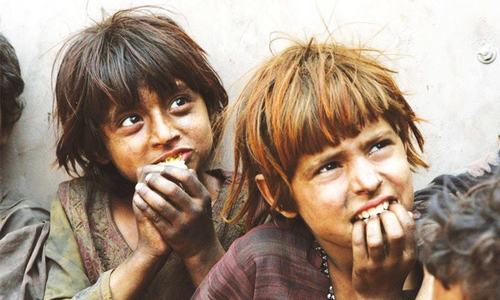ISLAMABAD: Forecasting worst recession in South Asia, the World Bank sees an increase in poverty in Pakistan over the next two years coupled with muted and uncertain economic recovery owing to the adverse impacts of Covid-19.
“In Pakistan, economic growth is projected to remain below potential, at 0.5pc for FY21 compared to over 4pc annual average in the three years to FY2019,” said the bank in its latest South Asia Economic Focus report, a twice-a-year publication.
The economic growth is projected to remain below potential, averaging 1.3 per cent for FY21 and FY22, according to the report.
It said the projection, which is highly uncertain, is predicated on the absence of significant infection flare-ups or subsequent virus waves that would require further widespread lockdowns.
Real GDP growth is estimated to have declined from 1.9pc in FY19 to -1.5pc in FY20, the first contraction in decades, says report
Speaking ahead of the report’s launch, Hartwig Schafer, World Bank’s vice president for the South Asia region, said: “The collapse of South Asian economies during Covid-19 has been more brutal than anticipated, worst of all for small businesses and informal workers who suffer sudden job losses and vanishing wages.”
In response to a question, he said the bank did not publish Pakistan’s poverty numbers for technical reasons, but increase in poverty rate was high like many other countries in the region.
The report said Pakistan’s economy has been severely affected by measures taken to contain the pandemic. Economic activity contracted and poverty is likely to have risen in FY20, as monetary and fiscal policy tightening, earlier in the year, was followed by lockdowns.
Growth is expected to be gradual but is likely to remain muted, given the heightened uncertainty and the resumption of demand compression measures. A possible resurgence of the infection, widespread crop damage due to locusts and heavy monsoon rains pose major risks to the outlook.
Overall, the report said, South Asia is set to plunge into its worst recession as the devastating impacts of Covid-19 on the region’s economies linger on, taking a disproportionate toll on informal workers and pushing millions of South Asians into extreme poverty.
It forecast a sharper than expected economic slump across the region, with regional growth expected to contract by 7.7pc in 2020, after topping 6pc annually in the past five years.
Mr Schafer said provision of immediate relief had dulled the impacts of the pandemic, but governments need to address the deep-seated vulnerabilities of their informal sectors through smart policies, and allocate their scarce resources wisely.
Talking about Pakistan, the report said real GDP growth (at factor cost) was estimated to have declined from 1.9pc in FY19 to -1.5pc in FY20, the first contraction in decades, reflecting the effects of Covid-19 containment measures that followed monetary and fiscal tightening prior to the outbreak.
It said the domestic economic activity is expected to recover, as lockdown measures are lifted with a gradual decline in active Covid-19 cases, but Pakistan’s near-term economic prospects are subdued. Significant uncertainty over the evolution of the pandemic and availability of a vaccine, demand compression measures to curb imbalances, along with unfavourable external conditions, all weigh on the outlook.
The current account deficit is expected to widen to an average of 1.5pc of GDP over FY21 and FY22, with imports and exports gradually picking up as domestic demand and global conditions improve.
The fiscal deficit is projected to narrow to 7.4pc in FY22, with the resumption of fiscal consolidation and stronger revenues driven by recovering economic activity and critical structural reforms.
According to the report, expenditures will remain substantial due to sizeable interest payments, a rising salary and pension bill, and absorption of state-owned enterprises’ guaranteed debt by government in the energy sector.
“Given anaemic growth projections in the near term, poverty is expected to worsen. Vulnerable households rely heavily on jobs in the services sector, and the projected weak services growth is likely to be insufficient to reverse the higher poverty rates precipitated by the pandemic,” said the report.
It said there were considerable downside risks to the outlook with the most significant being a possible resurgence of the infection triggering a new wave of global and/or domestic lockdowns and further delaying the implementation of critical structural reforms.
Locust attacks and heavy monsoon rains could lead to widespread crop damage, food insecurity and inflationary pressures, and livelihoods for households depending primarily on agriculture could also be negatively impacted.
Finally, external financing risks could be compounded by difficulties in rolling-over bilateral debt from non-traditional donors and tighter international financing conditions.
The bank noted that despite weak activity, consumer price inflation in Pakistan rose from an average of 6.8pc in FY19 to an average of 10.7pc in FY20, due to surging food inflation, hikes in administered energy prices, and a weaker rupee, which depreciated 13.8pc against the US dollar in FY20.
With elevated inflationary pressures, the policy rate was held at 13.25pc from July 2019 to February 2020 but was subsequently lowered to 7pc over the remainder of FY20, to support dwindling activity and as inflationary expectations fell amid the pandemic.
Published in Dawn, October 8th, 2020















































